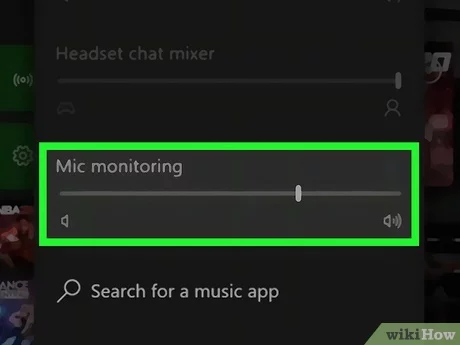What is Mic Monitoring and How to Use It
Mic monitoring, also known as sidetone, is a feature that allows you to hear your own voice through your headphones or speakers as you speak into a microphone. This real-time feedback can be incredibly useful in various situations, from gaming and streaming to professional audio recording and conferencing. In this comprehensive guide, we’ll explore what mic monitoring is, its benefits, how to enable it on different devices, and some potential drawbacks to consider.
Understanding Mic Monitoring
Mic monitoring works by taking the audio signal from your microphone and routing it back to your headphones or speakers. This enables you to hear your own voice as you speak, providing valuable feedback on your volume, clarity, and overall audio quality. The feature has been around since the early days of telephony, where it helped users regulate their speaking volume and ensure effective communication.In modern audio devices, mic monitoring serves a similar purpose. It allows you to monitor your voice and make necessary adjustments on the fly, without relying on feedback from others in the conversation. This can be particularly helpful in noisy environments or when using noise-cancelling headphones that may make it difficult to hear your own voice.
Benefits of Mic Monitoring
- Real-time Troubleshooting: With mic monitoring enabled, you can instantly detect any audio issues, such as distortion, muffling, or background noise, and make adjustments to your microphone or audio settings accordingly.
- Improved Communication: By hearing your own voice in real-time, you can better control your volume and speaking style, ensuring that your message is clear and audible to your conversation partners.
- Reduced Strain: Mic monitoring can help prevent you from straining your voice by speaking too loudly or shouting, which can happen when you’re unable to hear yourself properly.
- Enhanced Recordings: For content creators and audio professionals, mic monitoring is essential for capturing high-quality recordings. It allows you to monitor your voice and make adjustments to your positioning, volume, or tone as you record.
Enabling Mic Monitoring on Different Devices
The process for enabling mic monitoring varies depending on the device you’re using. Here’s a quick overview of how to set it up on some common platforms:
Windows
- Open the Sound settings by right-clicking on the speaker icon in the taskbar and selecting Open Sound settings.
- Under the Input tab, select your microphone and click Device properties.
- Check the “Listen to this device” box and select the device you want to use for monitoring.
- Adjust the monitoring volume to your preference and click OK.
Mac
- Open System Preferences and go to the Sound section.
- Select the Input tab and choose your microphone.
- Check the “Play sound effects through” option and select the device you want to use for monitoring.
- Adjust the monitoring volume as needed.
PlayStation
- Go to Settings > Devices > Audio Devices.
- Select your headset and adjust the Microphone Volume and Sidetone Volume settings to your preference.
Xbox
- Press the Xbox button on your controller to open the guide.
- Select Settings > General > Volume & audio output.
- Adjust the Mic monitoring slider to control the monitoring volume.
Mobile Devices
Most mobile devices, such as smartphones and tablets, have built-in mic monitoring functionality. You can typically adjust the monitoring volume through the settings menu or by using a compatible headset with an inline volume control.
Potential Drawbacks of Mic Monitoring
While mic monitoring offers many benefits, it’s important to be aware of some potential drawbacks:
- Echoes and Feedback: If the monitoring volume is set too high, it can cause echoes or feedback loops, which can be distracting and unpleasant to hear.
- Distraction: Hearing your own voice repeatedly can be distracting, especially if you’re not used to it. It may take some time to get accustomed to the sensation of hearing yourself in real-time.
- Latency: Depending on the device and audio setup, there may be a slight delay between when you speak and when you hear your voice through the monitoring system. This latency can be disorienting and may take some getting used to.
- Compatibility: Not all microphones and audio devices support mic monitoring. Make sure to check the specifications of your equipment to ensure compatibility.
FAQ Section
Q1: Do I need a special microphone for mic monitoring?A1: No, mic monitoring can work with most microphones, including those built into headsets, webcams, and mobile devices. However, some microphones may offer better monitoring quality than others.
Q2: Can I adjust the monitoring volume?A2: Yes, on most devices, you can adjust the monitoring volume to your preference. This allows you to find the right balance between being able to hear yourself clearly and avoiding echoes or feedback.
Q3: Will mic monitoring affect the audio quality for other participants?A3: No, mic monitoring only affects what you hear through your headphones or speakers. It does not impact the audio quality that other participants receive.
Q4: Can I use mic monitoring while streaming or recording?A4: Yes, mic monitoring can be useful for streamers and content creators to ensure they’re delivering high-quality audio to their audience. However, be mindful of potential echoes or feedback that may be picked up by your microphone.
Q5: Is mic monitoring necessary for gaming?A5: While not strictly necessary, mic monitoring can be beneficial for gamers, especially in competitive or team-based games where clear communication is crucial. It allows you to regulate your volume and ensure your teammates can hear you clearly.
Conclusion
Mic monitoring is a valuable feature that can enhance your audio experience in various scenarios, from gaming and streaming to professional audio applications. By enabling you to hear your own voice in real-time, mic monitoring allows you to make necessary adjustments, improve communication, and deliver high-quality audio. While there are some potential drawbacks to consider, such as echoes and distractions, the benefits of mic monitoring often outweigh these concerns. As you explore this feature on your devices, experiment with different settings and techniques to find what works best for your specific needs and preferences.
Comparison Table of Mic Monitoring Devices
| Device | Mic Monitoring Support |
|---|---|
| Windows PC | Yes |
| Mac | Yes |
| PlayStation | Yes |
| Xbox | Yes |
| Smartphones | Yes |
| Tablets | Yes |
| Dedicated Audio Interfaces | Varies by model |
For more detailed information on microphones and audio technology, you can refer to the Wikipedia page on Microphones.



